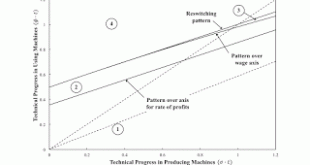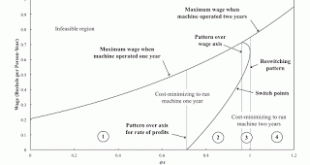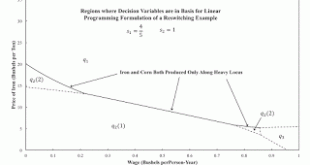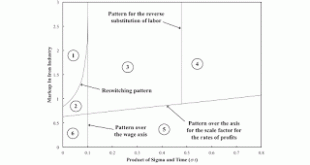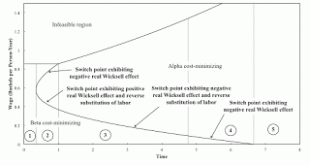I have made available a working paper with the post title. Abstract: This article presents an example in which perturbations in relative markups and technical progress result in variations in characteristics of the labor market. Around a switch point with a positive real Wicksell effect, a higher wage is associated with firms wanting to employ more labor per unit output of net product. Around a switch point with a reverse substitution of labor, firms in a particular industry want to hire...
Read More »On Mariana Mazzucato’s The Value of Everything
Mariana Mazzucato's The Value of Everything: Making and Taking in the Global Economy is a popular book. She argues that we should change our ideas of what we consider productive and unproductive jobs and activities. She presents a brief overview of the history of economics focused on the classical and neoclassical theories of value, describes how Gross Domestic Product (GDP) is calculated from the System of National Accounts (SNA), examines how finance came to be mistakenly considered...
Read More »More Pattern Analysis For An Example With Fixed Capital
Figure 1: A Two-Dimensional Pattern Diagram1.0 Introduction This post continues this example of the application of pattern analysis to the study of fixed capital. I generalize the technology in the previous post. Technical progress can now proceed at different rates in the production and use of machines. I partition the resulting two-dimensional parameter space based on how the distribution of income, in the system of prices of production, alters the economically efficient length to run...
Read More »Pattern Analysis for a Fixed Capital Example
Figure 1: A Pattern Diagram1.0 Introduction In this example, I perturb parameters in an example of Bertram Schefold's. I was disappointed in that, as far as I can see, one can analyze the choice of technique in this example by the construction of the wage-rate of profits frontier. As far as I understand, this is not true for joint production in general. I guess I also need to find an example in which the physical life of a machine is at least three years so as to find a three-technique...
Read More »A Linear Program for Markup Pricing
Figure 1: A Partition of Price-Wage Space for a Two-Commodity Reswitching Example1.0 Introduction This post generalizes my approach in Vienneau (2005). In that article, I present a Linear Programming (LP) problem for the firm. In the case of an economy that produces two commodities, one can present a graphical display that clarifies how Sraffa's equations arise. The dual LP is important in this development. Here, I show how that approach can work for a case in which rates of profits...
Read More »Extending An Example With Markup Pricing
Figure 1: A Two-Dimensional Pattern Diagram The example in this working paper is of an economy in which two commodities are produced. Technical progress is modeled as decreasing the coefficients of production in one of the processes for producing corn. They decrease at a rate of σ of ten percent. Figure 2 shows how the pattern of switch points vary with technical progress. Initially, the Beta technique is cost-minimizing. Then it becomes a reswitching example. Around the switch point at...
Read More »Structural Economic Dynamics, Real Wicksell Effects, and the Reverse Substitution of Labor
I have uploaded another working paper: This article presents an example in which technical progress results in variations in the labor market. Around a switch point with a positive real Wicksell effect, a higher wage is associated with firms wanting to employer more labor per unit output of net product. Around a switch point with a reverse substitution of labor, firms in a particular industry want to hire more labor per unit output of gross product. Technical progress can bring about...
Read More »A Visualization of the Choice of Technique
Figure 1: Regions for Basis Variables 1.0 Introduction I introduced a new way of visualizing the choice of technique for two-commodity models back in 2005. As far as I know, nobody has taken up this idea. I modify my method slightly by having labor advanced; wages are paid out of the surplus at the end of the year. I cite John Roemer in my paper linked previously. 2.0 Technology Table 1 specifies the technology I use for illustration. Each row lists the inputs needed to produce one...
Read More »William Nordhaus, 2018 “Nobel” Laureate, On Labor Values
Suppose one wants to quantitatively measure the growth in productivity over centuries. And one wants to look at specific commodities that can be said to have existed over such a long time. Think of a lumen of light or a food calorie. How can one do this? The definition of a price index over such a long time period is questionable. Adam Smith addressed this problem. Some would find his approach common sense. One could ask how long must a common laborer work to be able to afford the...
Read More »Paul Romer, 2018 “Nobel” Laureate
Despite his ignorance of the Cambridge Capital Controversy, Paul Romer's recent criticisms of mainstream macroeconomics have some good points. Typical Dynamic Stochastic General Equilibrium (DSGE) model time series, with exogenous shocks to certain parameters with specified probability distributions. And those parameters are named to suggest they have common language meanings. But there is no reason to think any such correspondence between the mathematics and the labels exist. I assume,...
Read More » Heterodox
Heterodox

